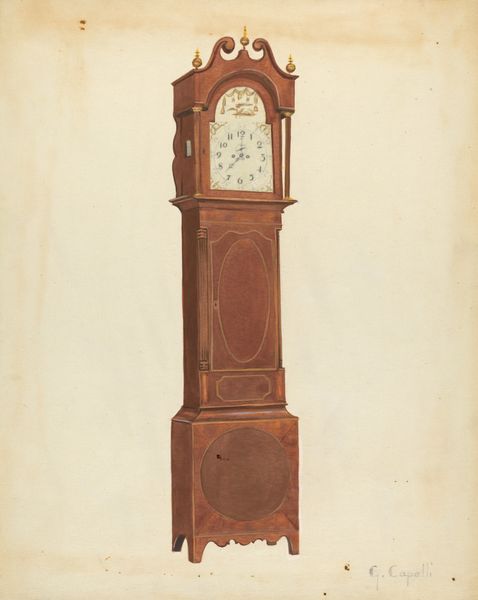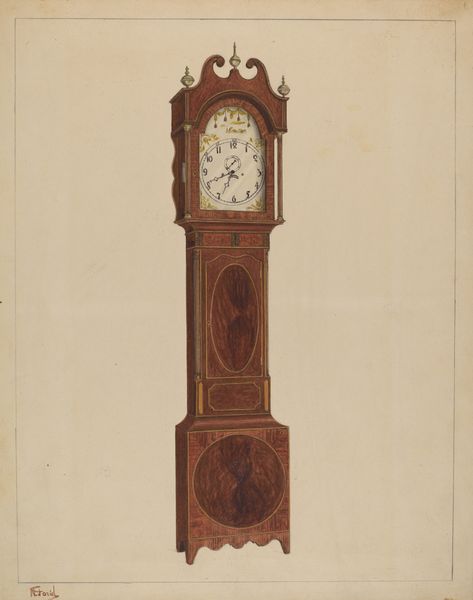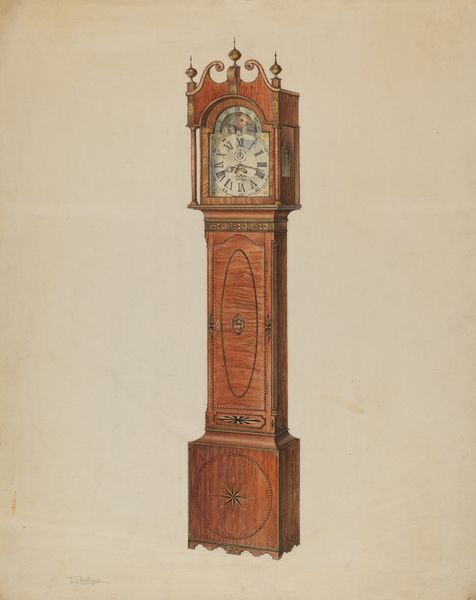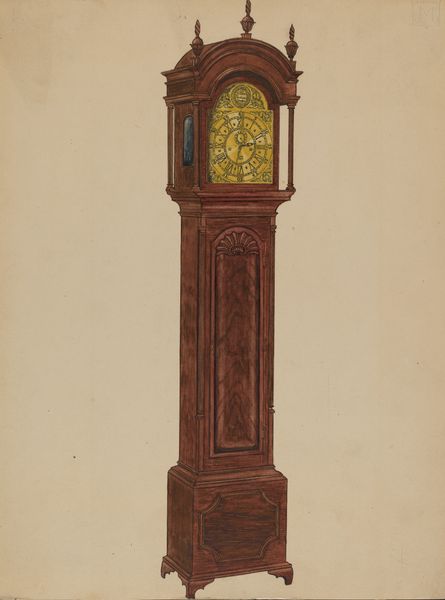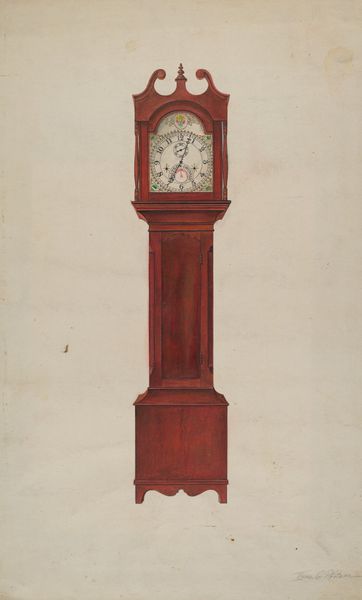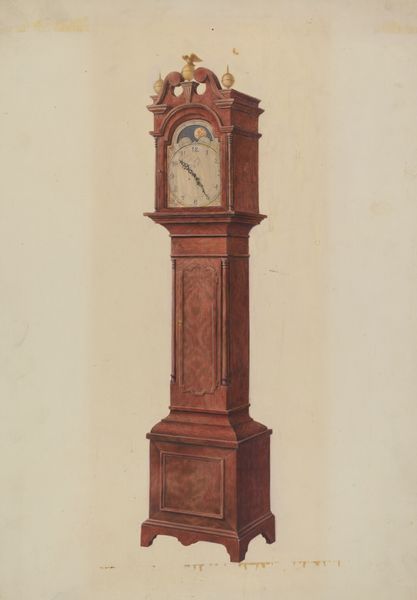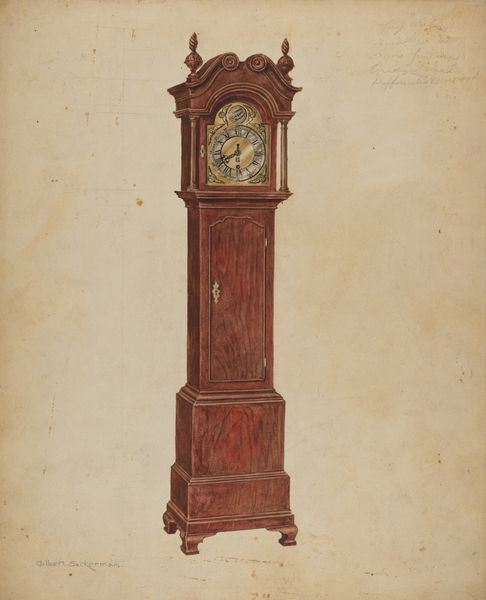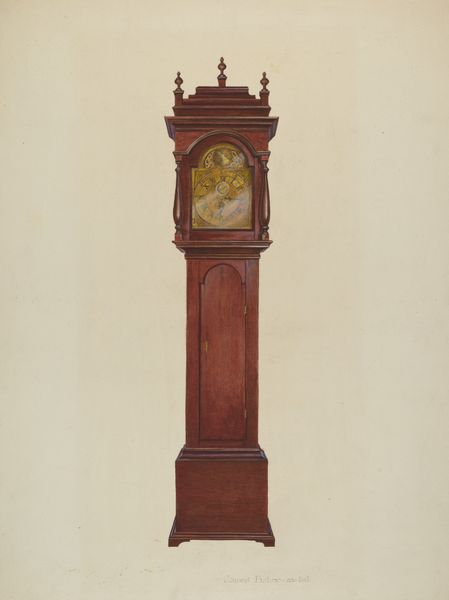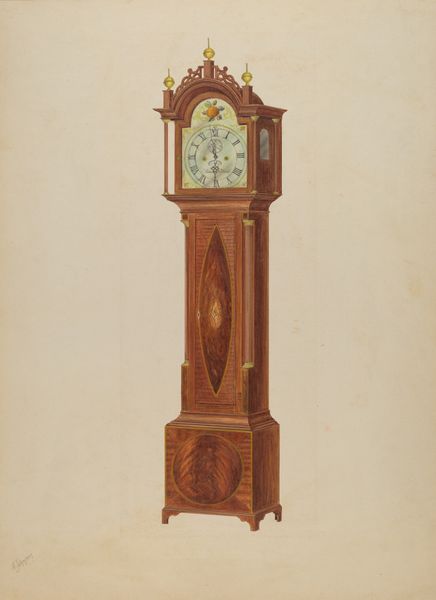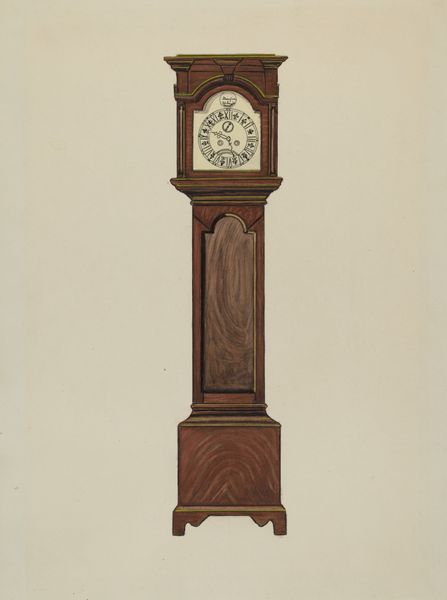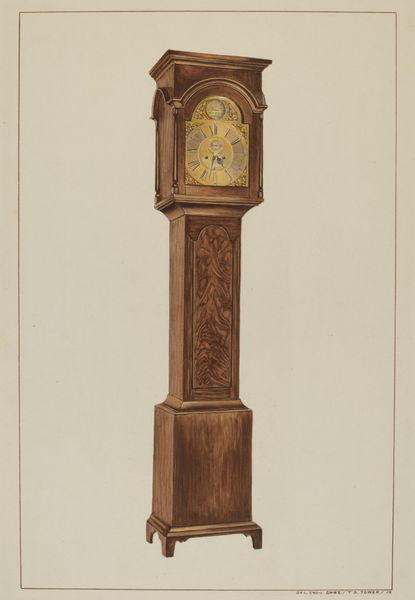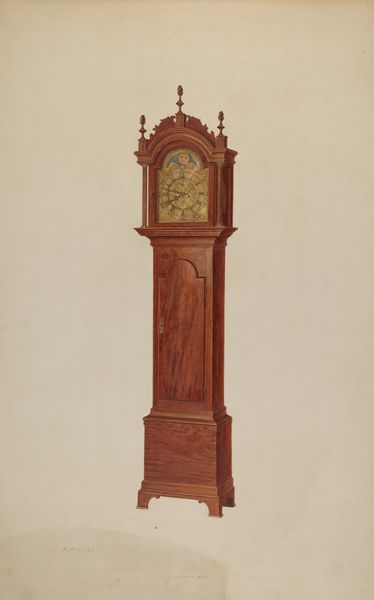
drawing, coloured-pencil, watercolor
#
drawing
#
coloured-pencil
#
water colours
#
watercolor
#
coloured pencil
#
watercolour illustration
#
academic-art
#
watercolor
Dimensions: overall: 45.9 x 35.6 cm (18 1/16 x 14 in.) Original IAD Object: 90" high; 19" wide
Copyright: National Gallery of Art: CC0 1.0
Curator: Here we have Arthur Johnson's "Tall Clock," created around 1938. The medium is watercolor and colored pencil on paper. It’s a surprisingly detailed rendering. Editor: The level of precision is remarkable! My immediate feeling is a sense of quiet observation, a stillness like it's capturing a frozen moment. The muted colors add to this somber effect. Curator: Indeed. One might think about how images of domestic objects become vessels for expressing and understanding societal shifts during the Depression era. Time itself held different connotations, measured against joblessness and uncertainty. Editor: I see what you mean. Time becomes a commodity and an anxiety point. How fascinating to consider the way gender intersects with this symbol: these stately clocks are so traditionally masculine, standing as pillars within a domestic sphere typically deemed feminine. It makes me wonder if there's some challenge to normative gender roles present, even subconsciously, here. Curator: I would suggest exploring how the tradition of craft and design instruction during that period emphasized historical styles and precision. Such education was democratized, if still quite classed, by publicly funded institutions and programs, often as practical responses to industrialization. An object like a clock takes on new social significance when produced as a means to survive hardship and celebrate the values of skill. Editor: Absolutely, and I'm drawn to the inherent irony—mass production allowing timekeeping to become incredibly democratized, accessible for practically everyone, versus the anachronistic tall case clock form that requires considerable artistry, handcrafting, time, and investment. Curator: We can observe an expression of personal aspirations and the value placed on heritage, specifically as people sought stability within that rapidly evolving economy. These historical symbols, presented as freshly crafted objects, suggest both continuity and a conscious reaching towards an aspirational past. Editor: Thank you. Thinking through the act of rendering this particular subject prompts reflections about gender, the passage of time, craft and identity during this specific period. Curator: Yes, situating objects in the timeline of American society, both yesterday and today, invites insightful conversation about how artistic production and audience reception of artwork intersect.
Comments
No comments
Be the first to comment and join the conversation on the ultimate creative platform.

